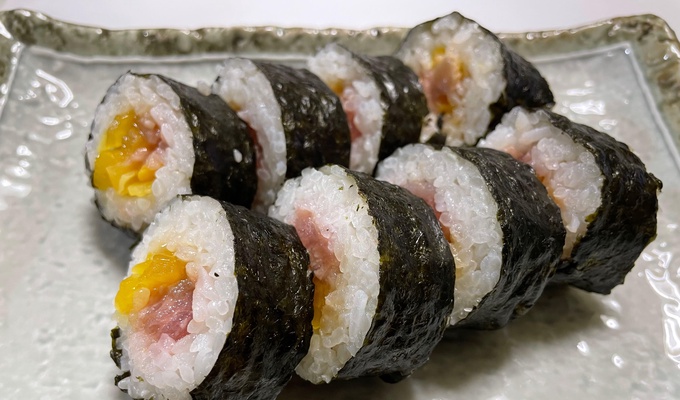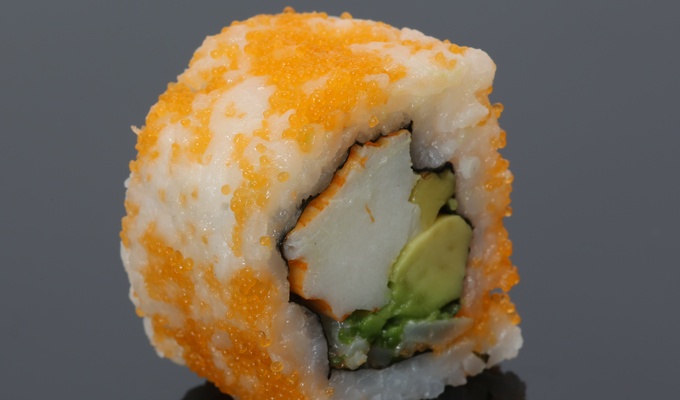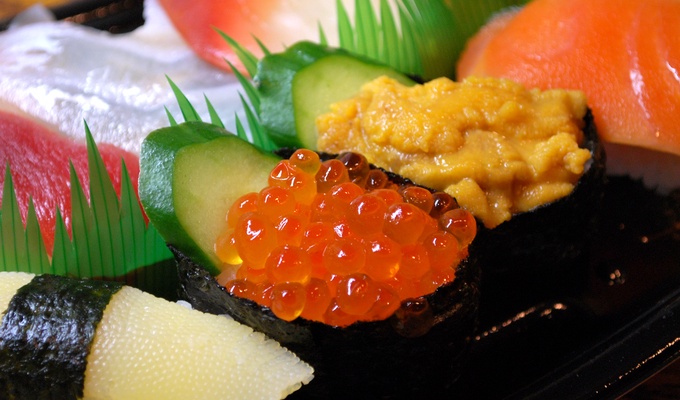Makizushi, also called norimaki, is a popular form of Japanese sushi in which a cylindrical roll of rice and filling is wrapped in nori (seaweed), or less commonly omelette, soy paper, or shiso (perilla) leaves. The cylinder is then cut into slices, and the whole is served, usually in six to eight pieces, as a single dish. The dish is sometimes abbreviated to simply maki (meaning "roll").
Some common types of makizushi include:
- Futomaki (太巻) are very large rolls, typically two or more inches in diameter, and usually contain multiple fillings.
- Hosomaki (細巻) are small sushi, about one inch in diameter, usually containing only one filling.
- Kappamaki (河童巻) is a hosomaki filled with cucumber. These are used as palate cleansers between maki containing raw fish and maki containing other flavors.
- Tekkamaki (鉄火巻) is hosomaki filled with raw tuna.
- Negitoro-maki (ねぎとろ巻) is hosomaki with with negitoro, which is scallion (negi) and chopped tuna (toro)
- Tsunamayomaki (ツナマヨ巻) is hosomaki filled with canned tuna dressed with mayonnaise.
- Temaki (手巻, "hand roll") is a large conical sushi, folded so that it is open on the wider end.
- Tamago makizushi (玉子巻き寿司) is makizushi is wrapped in a thin omelet.
- Tempura makizushi (天ぷら 巻き寿司) or agezushi (揚げ寿司ロール) is a fried makizushi.


